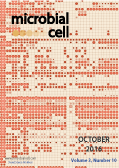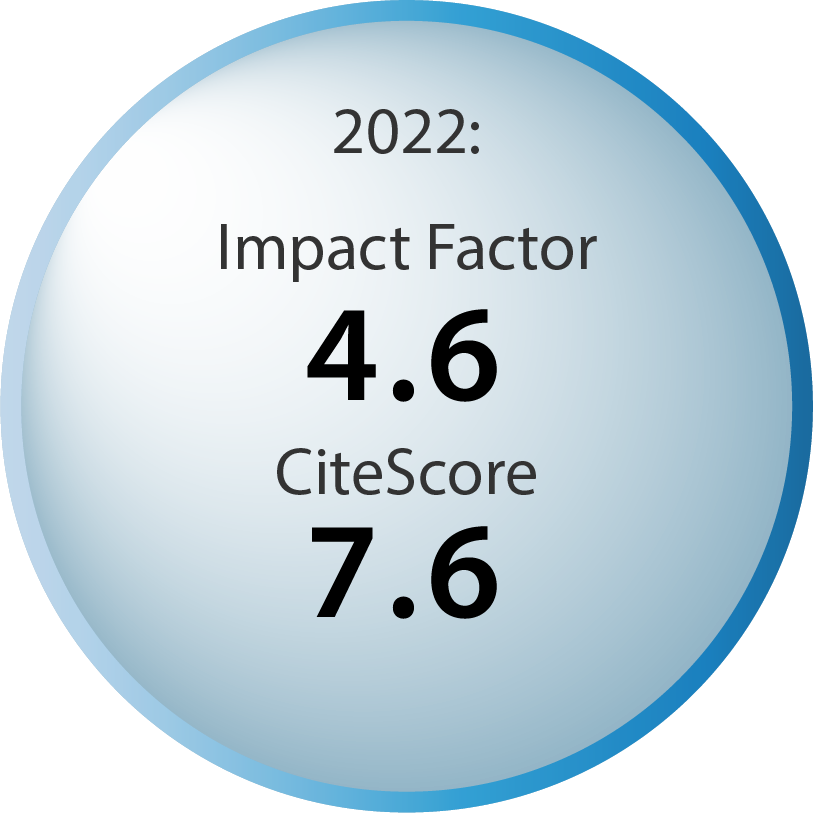Table of contents
Volume 3, Issue 10, pp. 491 - 531, October 2016
Cover: Evolutionary conservation of membrane transport proteins (rows) of the malaria parasite,
Plasmodium falciparum, in different eukaryotic species (columns). The degree of evolutionary conservation (dot size and color) indicates proteins that are putative drug targets (image by January Weiner 3rd and Taco W.A. Kooij, Radboud University, The Netherlands); image modified by MIC. The cover is published under the Creative Commons Attribution (CC BY) license.
Enlarge issue cover
The curious case of vanishing mitochondria
Anna Karnkowska and Vladimír Hampl
Editorial |
page 491-494 | 10.15698/mic2016.10.531 | Full text | PDF |
Abstract
Due to their involvement in the energy metabolism, mitochondria are essential for most eukaryotic cells. Microbial eukaryotes living in low oxygen environments possess reduced forms of mitochondria, namely mitochondrion-related organelles (MROs). These do not produce ATP by oxidative phosphorylation on their membranes and some do not produce ATP at all. Still, they are indispensable because of other essential functions such as iron-sulphur (Fe-S) cluster assembly. Recently, the first microbial eukaryote with neither mitochondrion nor MRO was characterized – Monocercomonoides sp. Genome and transcriptome sequencing of Monocercomonoides revealed that it lacks all hallmark mitochondrial proteins. Crucially, the essential mitochondrial pathway for the Fe-S cluster assembly (ISC) was replaced by a bacterial sulphur mobilization (SUF) system. The discovery of such bona fide amitochondriate eukaryote broadens our knowledge about the diversity and plasticity of eukaryotic cells and provides a substantial contribution to our understanding of eukaryotic cell evolution.
Accumulation of metabolic side products might favor the production of ethanol in Pho13 knockout strains
Guido T. Bommer, Francesca Baldin & Emile Van Schaftingen
News and thoughts |
page 495-499 | 10.15698/mic2016.10.532 | Full text | PDF |
Phylogenetic profiles of all membrane transport proteins of the malaria parasite highlight new drug targets
January Weiner 3rd and Taco W.A. Kooij
Research Articles |
page 511-521 | 10.15698/mic2016.10.534 | Full text | PDF |
Abstract
In order to combat the on-going malaria epidemic, discovery of new drug targets remains vital. Proteins that are essential to survival and specific to malaria parasites are key candidates. To survive within host cells, the parasites need to acquire nutrients and dispose of waste products across multiple membranes. Additionally, like all eukaryotes, they must redistribute ions and organic molecules between their various internal membrane bound compartments. Membrane transport proteins mediate all of these processes and are considered important mediators of drug resistance as well as drug targets in their own right. Recently, using advanced experimental genetic approaches and streamlined life cycle profiling, we generated a large collection of Plasmodium berghei gene deletion mutants and assigned essential gene functions, highlighting potential targets for prophylactic, therapeutic, and transmission-blocking anti-malarial drugs. Here, we present a comprehensive orthology assignment of all Plasmodium falciparum putative membrane transport proteins and provide a detailed overview of the associated essential gene functions obtained through experimental genetics studies in human and murine model parasites. Furthermore, we discuss the phylogeny of selected potential drug targets identified in our functional screen. We extensively discuss the results in the context of the functional assignments obtained using gene targeting available to date.
VDAC regulates AAC-mediated apoptosis and cytochrome c release in yeast
Dário Trindade, Clara Pereira, Susana R. Chaves, Stéphen Manon, Manuela Côrte-Real, Maria João Sousa
Research Articles |
page 500-510 | 10.15698/mic2016.10.533 | Full text | PDF |
Abstract
Mitochondrial outer membrane permeabilization is a key event in apoptosis processes leading to the release of lethal factors. We have previously shown that absence of the ADP/ATP carrier (AAC) proteins (yeast orthologues of mammalian ANT proteins) increased the resistance of yeast cells to acetic acid, preventing MOMP and the release of cytochrome c from mitochondria during acetic acid – induced apoptosis. On the other hand, deletion of POR1 (yeast voltage-dependent anion channel – VDAC) increased the sensitivity of yeast cells to acetic acid. In the present work, we aimed to further characterize the role of yeast VDAC in acetic acid – induced apoptosis and assess if it functionally interacts with AAC proteins. We found that the sensitivity to acetic acid resulting from POR1 deletion is completely abrogated by the absence of AAC proteins, and propose that Por1p acts as a negative regulator of acetic acid – induced cell death by a mechanism dependent of AAC proteins, by acting on AAC – dependent cytochrome c release. Moreover, we show that Por1p has a role in mitochondrial fusion that, contrary to its role in apoptosis, is not affected by the absence of AAC, and demonstrate that mitochondrial network fragmentation is not sufficient to induce release of cytochrome c or sensitivity to acetic acid – induced apoptosis. This work enhances our understanding on cytochrome c release during cell death, which may be relevant in pathological scenarios where MOMP is compromised.
Putative mitochondrial α-ketoglutarate-dependent dioxygenase Fmp12 controls utilization of proline as an energy source in Saccharomyces cerevisiae
Ikuhisa Nishida, Daisuke Watanabe, and Hiroshi Takagi
Research Reports |
page 522-528 | 10.15698/mic2016.10.535 | Full text | PDF |
Abstract
The amino acid proline functions as a nitrogen source and as a stress protectant in the yeast Saccharomyces cerevisiae. However, utilization of proline as a carbon source in S. cerevisiae cells has not been studied yet. In the process of study on the physiological roles of the found-in-mitochondrial-proteome (FMP) genes in proline metabolism, we found that Δfmp12 cells could grow better than wild-type cells on agar plate medium containing proline as the sole nitrogen and carbon sources. In contrast, overexpression of FMP12 negatively affected cell growth under the same condition. The Fmp12 protein was localized in the mitochondria and was constitutively expressed. Deletion of the genes that encode mitochondrial enzymes, such as proline dehydrogenase (PUT1), Δ1-pyrroline-5-carboxylate dehydrogenase (PUT2), alanine transaminase (ALT1), and α-ketoglutarate dehydrogenase subunit (KGD1), abolished the enhanced cell growth in Δfmp12. These results provided the first evidence that proline can be utilized as a carbon source via the mitochondrial proline metabolic pathway and the subsequent tricarboxylic acid (TCA) cycle in S. cerevisiae. The function of Fmp12, which has a similarity with α-ketoglutarate-dependent dioxygenases of the yeast Candida species and human, might inhibit cell growth by skipping the ATP production step of the TCA cycle.
B cell-helping functions of gut microbial metabolites
Chang H. Kim
Microreviews |
page 529-531 | 10.15698/mic2016.10.536 | Full text | PDF |
Abstract
Commensal microflora profoundly affects the host immune system. It has long been observed that commensal bacteria enhance antibody production in the host by producing antigens for B cell receptors (BCR) and ligands for Toll-like receptors (TLR). We recently reported that the microbial metabolites short-chain fatty acids (SCFAs) regulate the metabolism and gene expression in B cells to promote antibody production (Kim et al. Gut Microbial Metabolites Fuel Host Antibody Responses. Cell Host & Microbe. 2016; 20(2):202-14). The B-cell helping function of SCFAs and its implication in the host immune system are discussed in this article.










